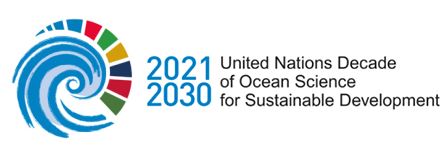Further Challenges for Warnings of Tsunamis
Satellite Activity for the UN Ocean Decade Safe Ocean Laboratory
Workshop
06 - 07 April 2022
Organiser(s) & Staff
Participation
Open attendance.

Session A: Learning from recent tsunamis generatated by non-seismic and complex sources
Session B: What do we know and need to know to warn for tsunamis generated by non-seismic and complex sources?
Videos of both sessions are available to view here.
A News Brief is available here.
The Concept Note is available here.
The Agenda & Timetable is available here.
In addition to the most typical types of tsunamis generated by undersea earthquakes along subduction zones, there are what we term “non-seismic tsunamis” and “complex tsunamis”. These may be generated by landslides and submarine landslides generated by volcanic eruptions or earthquakes not necessarily associated with subduction zones, or they may be also triggered by subduction earthquakes increasing the size and danger. They may also be caused by atmospheric disturbances, either due to certain resonating meteorological conditions or infrasound sonic waves created by volcanic eruptions. We are currently very limited in our knowledge of such tsunamis and in our ability to monitor their generation and warn for their likely impacts to save lives.
The massive eruption of the Krakatoa volcano off the coast of Indonesia in 1883 created a non-seismic tsunami that devastated communities along local coastlines and further impacted coastal communities across the Indian Ocean. In 2018 a devastating tsunami was created when the flank collapsed of Anak Krakatoa (volcanic island that has grown in the place of the former Krakatoa Island), taking the lives of more than 400 people across the other side of Sunda Strait on the island of Java. Also in that same year, more than 4000 were killed by the Palu earthquake and tsunami (claiming several 100 of the 4000+ death toll), which is thought to have created submarine landslides that magnified the main tsunami waves to 4-7m. On 15th January 2022 the eruption of the Hunga Tonga – Hunga Ha’apai volcano saw tsunami waves devastate many coastal communities of Tonga, with tsunami waves also spreading across the Pacific Ocean. Amazingly the infrasound sonic waves in the atmosphere generated by the explosion traversed the globe three times, even generating small tsunami waves in other ocean basins such as the NE Atlantic. In Tonga, many lives were fortunately saved by the community recognizing the natural warning signs and being ready to self-evacuate for such a short-fuse event close to their shores. The advisories and warnings issued for the rest of the Pacific Ocean were based on limited information and a lack of forecasting skill for such more unusual events.
This Satellite Activity contributes to the UN Ocean Decade Safe Ocean Laboratory, 5 - 7 April 2022. Further information on the Safe Ocean Laboratory is available at https://www.oceandecade-conference.com/en/a-safe-ocean.html .
Objectives
Address the Safe Ocean Challenge to increase community resilience to ocean hazards by:
- Greatly improving our current knowledge of the threat from tsunamis generated by non-seismic and complex sources by examining recent and past events;
- Identifying detection systems and standard operating procedures required now with existing capabilities to warn and respond to tsunamis generated by non-seismic and complex sources;
- Identifying pathway for enhanced monitoring systems and forecasting techniques required to provide more accurate, timely and effective warnings tsunamis generated by non-seismic and complex sources in the future.
[View an annotated printable version of this agenda]
| Agenda | Code | Name | Updated on | Action |
|---|---|---|---|---|
| Agenda | Code | Name | Updated on | Action |
| Concept Note: Further Challenges for Warnings of Tsunamis | 01/04/2022 |
|
||
| Agenda & Timetable: Futher Challenges for Warnings of Tsunamis | 04/04/2022 |
|
There are 0 participants associated with Further Challenges for Warnings of Tsunamis .
Total Invited: 0
Confirmed: 0
Not confirmed: 0
Unapproved: 0
Not-participating: 0
Rejected: 0
Label(s): no labels
Created at 06:52 on 08 Mar 2022 by Nora Gale
Last Updated at 06:32 on 21 Apr 2022 by Nora Gale
